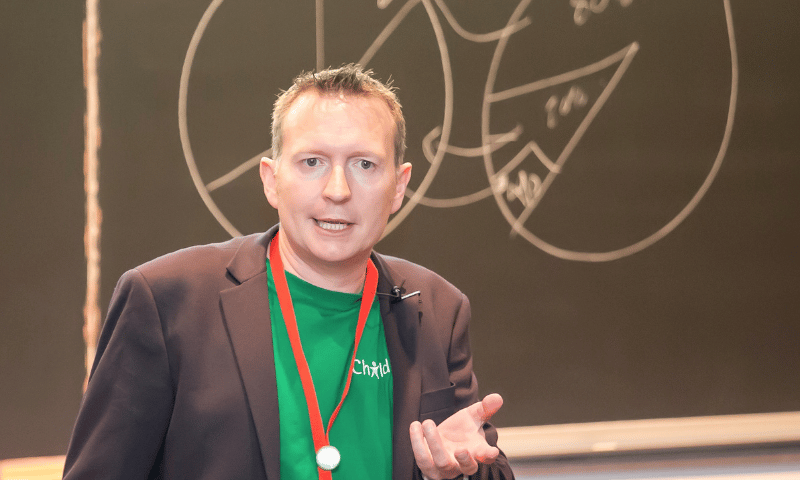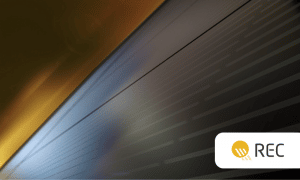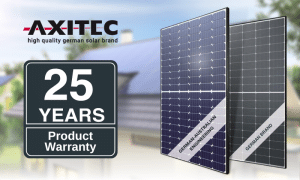Most Australians probably have no idea that houses have energy star ratings, let alone would know how their house would fare in an energy efficiency assessment. Most new builds across Australia require a 6 star energy rating, which is a rating out of 10. Our recent guest on our podcast, Road to Zero, is the owner of a 9.1 star rated home on the Gold Coast in Queensland, built by Kai Konstruct, which will feature on Season 6 of Open Homes Australia. Sean Triner, the co-founder of Moceanic and a director at WWF Australia, shared with us some features of his exceptional home and his thoughts on climate change and how we can all make a positive impact.
Hi Sean, thank you for joining us! Please give us a little insight into your journey to date.
My background is in fundraising. I am originally from the UK and I fundraised in areas of disability, medical research, and mental health. My personal passion has been in social justice and reducing inequality. I moved to Australia and set up a business to help charities fundraise. Our first full contract was with Amnesty International and, shortly after, WWF. Both were record-breaking successes, raising the organisations’ 10x more net income than the investment working with me. Kept that record for many years, changing the way fundraising is done in Australia. I sold that business about 6 years ago and decided to go into training. I co-founded Moceanic, a training and coaching business for not-for-profits and fundraisers, 6 years ago.
What was the motivation behind building a 9-star energy rated home?
There are some truly beautiful homes here but I wanted to show you can build a luxury Gold Coast smart home that is super energy efficient. Our car, bikes, and little boat too, are all electric.
Australians are slowly moving towards electrification. What benefits do you see to moving to an all-electric home?
The biggest benefit is the future – any fossil fuel-driven energy use, whether petrol in a car, gas in your BBQ, or air con driven by coal, is effectively being ‘subsidised’ by people in the future. I know nearly all Australians get it now, they understand the connection between fossil fuels and climate change. They worry about their kids’ future. So, an easy thing to do right now is go electric where you can.
What attracted you to Kai Konstruct?
We wanted a supplier with a reputation for high-quality finishes and who would project manage the whole job. It wasn’t so much a sustainable decision, as we couldn’t find builders who specialise in that area. However, we hoped that the process would get them to be making sustainable recommendations to future clients.
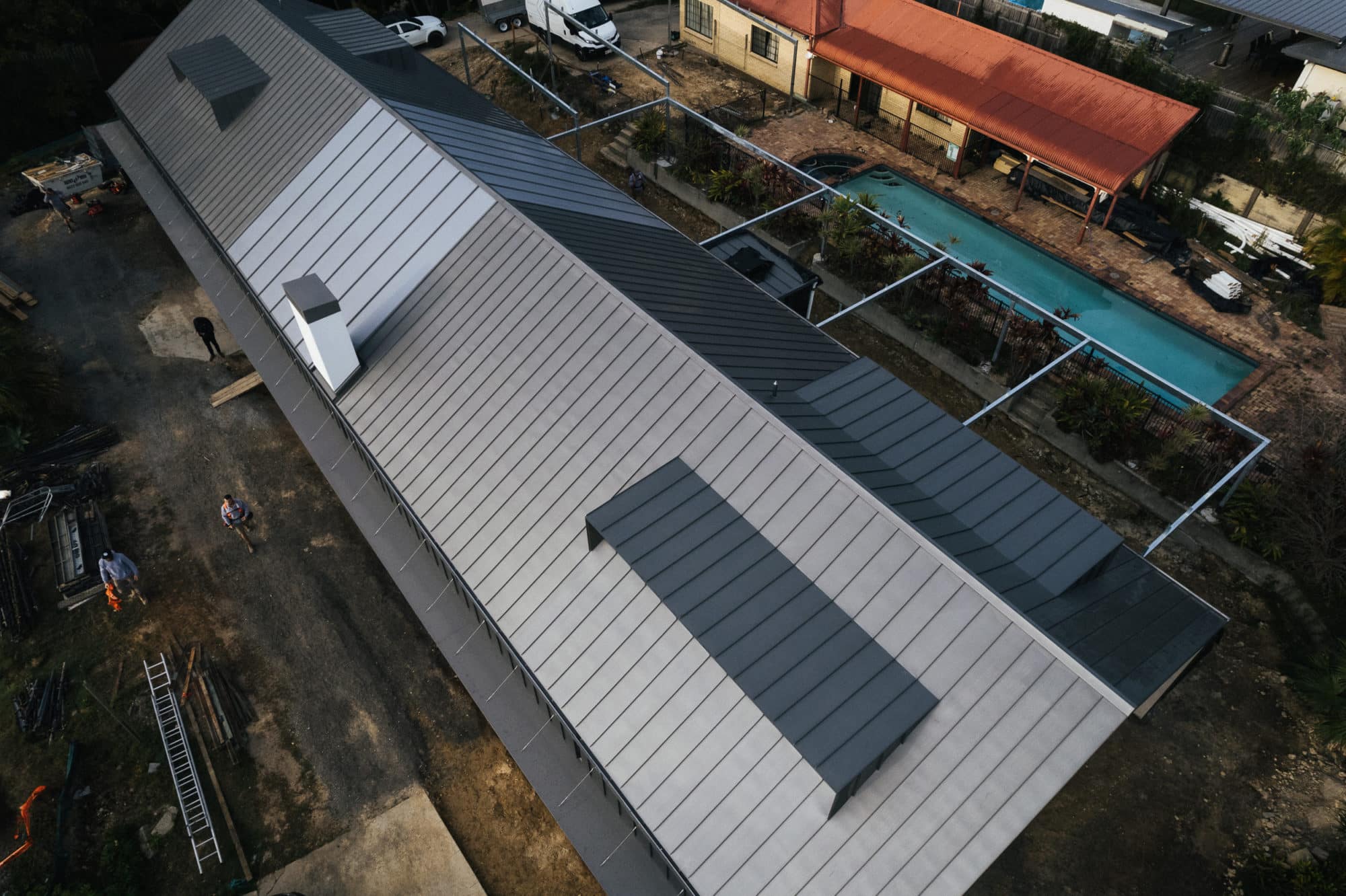
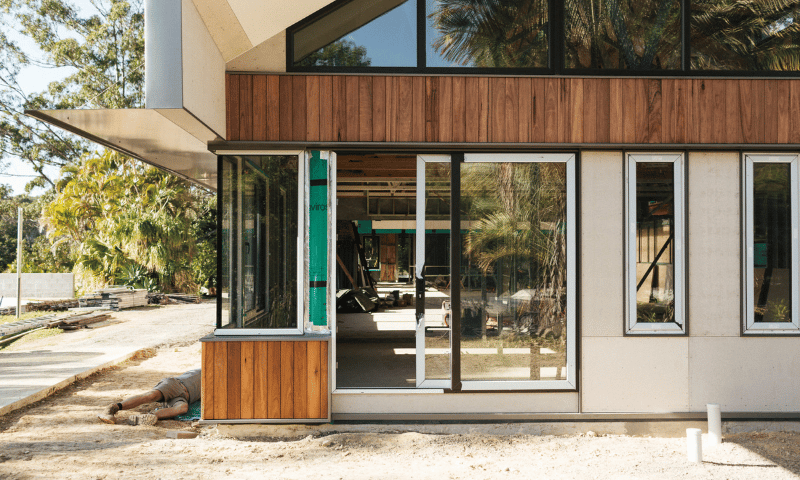
The big decision around the house and sustainability was the architect. For that we went with PTMA, Teresa and Peter. They have an excellent track record on sustainability and will ONLY do jobs where the client wants to engage in that area.
As an EV and Electric Boat owner, what message would you give to Aussies looking to make the switch?
There are two perceived problems for people considering the switch; initial cost and range anxiety. We had both concerns but realised very quickly that one – range – is definitely not a problem for most Aussie families. This issue would only really be a problem for the less than 10% of car buyers who drive more than 300km a day. Below that, its fine.
What really is a problem though is the price. Electric is still more expensive. Like for like maybe 20% or even 30% more. Even with petrol hovering around $2 a litre, subsidies and incentives from governments, much cheaper servicing and charging the car at home, it would take 5 years to be more cost effective if you drive about 20,000km. If you’re charging off solar like we do, that would come down. But still – you WILL be paying more under current policies for an electric car. The thing is, electric cars are just better! If you can afford the upfront investment. And remember, future you and your kids will be paying much, much more for the petrol you burn now.

The average solar system size in Australia is inching towards 10kW. Your system is considerably larger at 20kW with 12kw battery storage. Why did you choose such a large system?
It’s a big house, came with a big pool and an electric car. We built a solar pergola connecting the buildings. We would have built the pergola anyway, so the cost was marginal to just get more panels.
As a current board member for the World Wide Fund for Nature, more commonly known as WWF, you’ve no doubt witnessed first-hand the impact of climate change around the world.
Actually, you see the impact more in my role as a volunteer firefighter, as many Aussies are seeing the impact first-hand.
What challenges are facing WWF right now?
Same as everyone – not unique to us. Climate. We have to stop burning fossil fuels.
Pick 3 of WWF’s projects; which are you most passionate about?
The first is not really a project – it is policy. Policy is so important. Our relationships with governments and big business are strong, and we are usually consulted whenever policy is being discussed.
Not surprisingly, wildlife is next. Climate is not the only threat there – land clearing, and deforestation are also horrific problems. Australia is a world leader of OECD countries in destroying forest. Not a good record. WWF is doing lots of work here, including our 2 billion trees initiative, part of our regenerate Australia program funded by hundreds of thousands of amazing Australian – and overseas – donors. I’d encourage everyone to check out wwf.org.au and maybe adopt a koala for Christmas, or a birthday, and please sign our petition.
My last one is a bit out there – Women Micro-Finance in the Solomon Islands. This is a smart program working with local groups in the Solomons to reduce harm to reefs through financial management. I love it because it is so simple; relatively cheap to implement, collaborative approach, and its very effective.
How has climate change influenced your purchases?
Everything. Even down to all the booze in the house being Australian, always looking at the labels when we buy stuff, cooking to season. Also, what we plant. There are so many bad options; frangipani, palms etc, that are just what people get. I think everyone knows the damage caused by lantana but its more than just the obvious. Local plants will attract and support local birds, reptiles, and mammals. It’s amazing, just by planting right you’ll see more echidnas, wallabies, and koalas. And this is something that doesn’t cost more $ just a little more thinking.
Your new home has some amazing features thanks to automation. How do you see automation playing a role in our move to net zero?
The best example is the car. Normally, you plug it in, it charges using the grid, solar or battery. But with a smart home, you can just leave it plugged in and it will only charge when you would otherwise export the energy. For me, I pay 24c a kWh to import and gain a massive 3c when I export. However, if I have a big trip or need faster charging I can just tell it.
You won’t be surprised to learn that we do pay that little bit extra for our imported energy by only buying green energy from the grid.
If you are looking to reduce your carbon footprint with solar and/or a battery storage system, complete our quick survey and receive up to 3 FREE quotes today.
Our professional solar installers in Melbourne will assess and determine your energy needs. We customise a solar panel system in Melbourne to fit the roof size of your property, ensuring you receive the most suitable solar panel system for your Melbourne home, meeting to property’s energy requirements.









